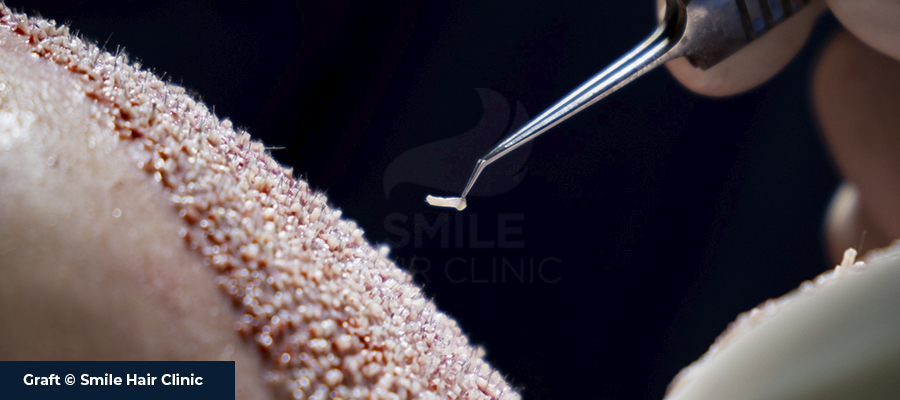Role of a Graft in Hair Transplantation

What is a graft?
The graft is the general name used for tissues given to be transferred to another part of the body in the medical literature. In FUE hair transplantation, it is used for hair follicles taken along with the surrounding tissue.
What role does a graft have in hair transplantation?
Today, the internet provides us with information on every subject. Most individuals who have sapphire hair transplantation research on the internet before the procedure to have an opinion about how the procedure works. Although the number of grafts is presented as the most important feature affecting the result of FUE hair transplantation in many articles, it gives us only limited information about the result when evaluated alone. Although the number of grafts is high, patients cannot understand why the result does not satisfy them. In FUE hair transplantation, it is necessary to evaluate the density and naturality of the result, the number of grafts, the number of hair in each graft, the thickness of each hair strand, and the surface area size transplanted.
Graft Number
Mathematics and physics can explain everything in this world. We divide the mass by the volume to determine the density of a substance in physical calculations. In sapphire hair transplantation, if we consider the new hair transplanted as a single substance covering the surface area, the number of grafts x the average number of hairs in the grafts x the thickness of each hair strand gives us the mass that is the absolute thickness. We can think of the volume in which the mass will spread as surface area. Therefore, if the number of grafts, the number of hair per graft, and the thickness of the hair strands are high, the result will be more satisfactory for the patients. While other factors affect the result of FUE hair transplantation, only caring about the number of grafts and planning with this data will distract you from the truth.
How to Calculate Graft Number?
Doctors determine the number of grafts with the help of the surface and donor area. In short, the larger and more frequent the donor area is, the greater the number of grafts. Another point that should not be considered is that people with a large donor area have large areas to be transplanted. It will be necessary to use more grafts to achieve the same density as a small area in FUE hair transplantation, which is simply performed on a large surface. Considering this, it is seen that the number does not affect the result as much as it is thought. 35-45 grafts should be placed per cm2 to obtain a good result.
The average number of hairs in each graft is determined as 2.2 hair/graft. When the grafts of some individuals are examined, it is seen that this number is around 3-4. It is around 5-6 in some people. The high number of hairs per graft positively affects the outcome.
The hair strand thickness is measured in micron units (micrometers). The diameter of a human hair varies between 17-181 microns. This value is lowest in blond and gray hair and highest in black hair. When the lowest and the highest possible values are rated, it can be understood how important this factor is to the outcome.
Equation of the result in FUE hair transplantation
Considering the factors mentioned above, we can form an equation with the factors affecting the result.
Number of grafts x Average number of hair per graft average hair thickness/size of the surface area to be transplanted=Absolute Density
Each factor that increases absolute density positively affects the result of hair transplantation. For this reason, all these factors should be considered while planning the pre-transplantation process.
It is very important to evaluate all factors in hair transplantation to obtain the desired result in the planning phase:
- If it is thought that more grafts can be taken from the donor area, the implant surface area should be calculated, and the appropriate number of grafts should be removed.
- If the number of donor sites is limited, the surface area to be transplanted should be limited accordingly.
- If the area to be transplanted is very small, it is best to make incisions first and to know the exact number of grafts to be removed. In this way, it is prevented from taking more grafts than necessary.
- If the hair of the person to be transplanted is thin, incisions/canals must be opened with a specific density to reach a certain density.
As a result of the planning made by considering all these variables, a result that will meet the person’s wishes can be obtained by determining the sapphire hair transplantation area with a satisfactory density.
 Whatsapp
Whatsapp
